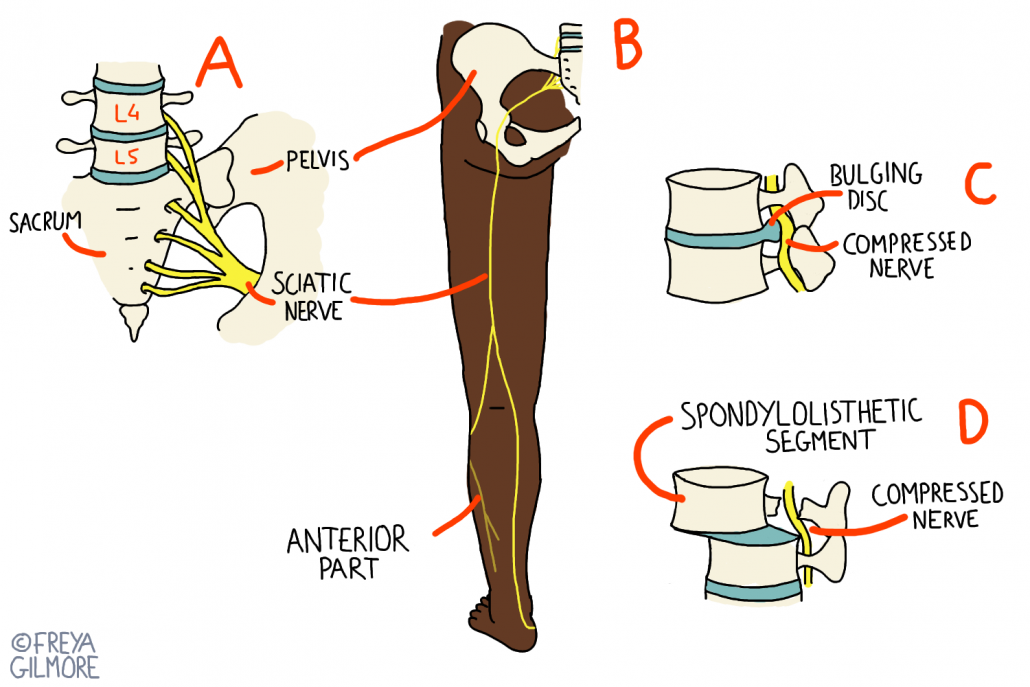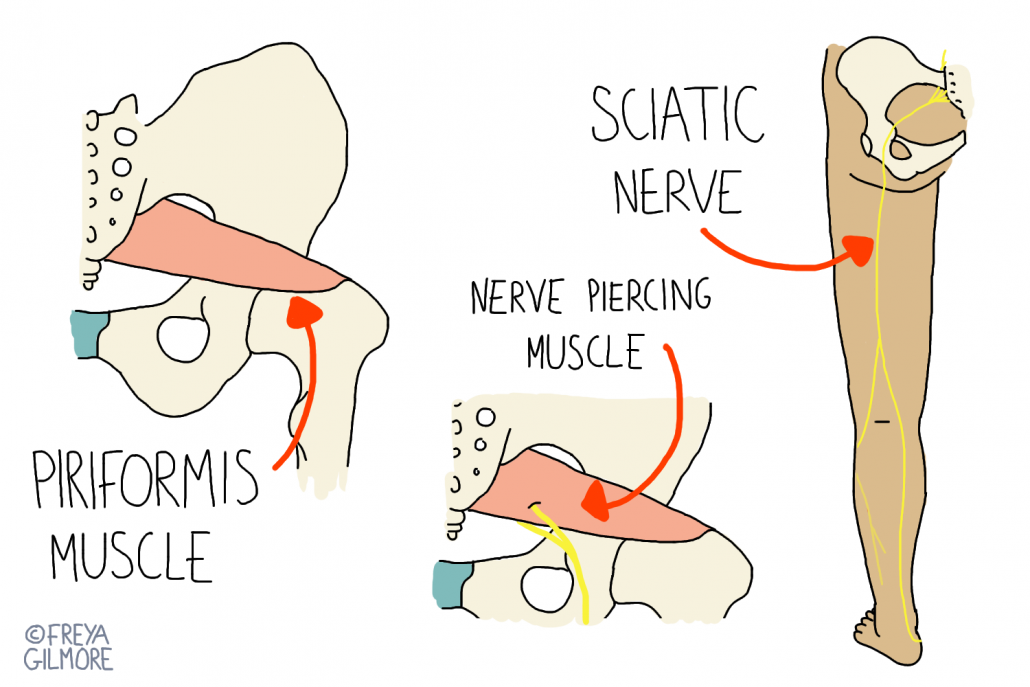Sciatica is a collection of symptoms that occur when the sciatic nerve is irritated.

The sciatic nerve is a thick nerve that runs down the back of the leg. It starts in the lower back, where a number of nerves leave the spinal cord and join to form the sciatic nerve. After running down the back of the thigh, it splits below the knee. One part continues down the calf, and the other branch wraps around to supply the outside of the lower leg.
When you experience an episode of sciatica, these areas above are where your symptoms will be. Similar symptoms in the front of the thigh might be caused by another nerve, but are not caused by sciatica. Likewise, not all thigh pain comes from a nerve, sometimes it’s as simple as a pulled hamstring.
Sciatica Symptoms
Symptoms of an irritated nerve are:
- Shooting pain
- Pins and needles
- Numbness
- Weakness
Depending on where the nerve is irritated, there may be some other factors that give your osteopath a lot of information. Knowing where the irritation occurs means we can get to the root cause.
Disc Bulges and Sciatica
A bulging disc is the cause patients are often most worried about. The discs between each spinal bone (vertebra) have a fibrous outer layer and a softer inner section. Sometimes the inner layer can push against a weak spot in the outer layer and cause a bulge. Bulges happen at the back of the disc, as there is a strong ligament at the front. However, nerves leave the spinal cord towards the back of each level. If a bulge is at just the right point, it can put direct pressure on the nerve.
This suggests that bulges in other directions would not irritate the sciatic nerve. This is true- and in fact bulging discs often cause no symptoms.
Muscular Causes
Further down the nerve, there are points at which muscles can cause the irritation. One such area is in the buttock where the nerve runs deep through the gluteal muscles. The piriformis muscle is one of the deeper muscles, and for some people it is pierced by the sciatic nerve. In others, they just run close to each other. If the nerve passes through the muscle itself, it makes sense that muscle tension could irritate the nerve. Sciatica caused by the piriformis muscle is called Piriformis Syndrome.

Muscle tension can be the body’s response to pain. For example, a joint can be protected if a muscle tenses up and stops it moving. But in Piriformis Syndrome, it can cause a perpetual cycle. The tight muscle causes nerve pain, so the body causes the muscle to stay tight, and so on. Fortunately, releasing the muscle is usually quite straight forward.
Managing Sciatica
Your osteopath is qualified to diagnose and treat sciatica. Their treatment plan will be dictated by the root cause among other factors. Treatment may include techniques and exercises for you to do at home. Both of these will aim to calm down the irritated nerve as well as treat the root cause. If there are other compensatory patterns present too, treatment may also cover them.
When nerves are involved, we expect longer term issues to take much longer to resolve than those that haven’t been there for long. Nerves react differently to muscles and joints, and can become sensitised after prolonged irritation. This can lead to hypersensitivity to stimuli, which makes treatment more complicated. Always nip it in the bud if you develop symptoms of nerve irritation.
If you are suffering from the symptoms of sciatica, make an appointment online now.
